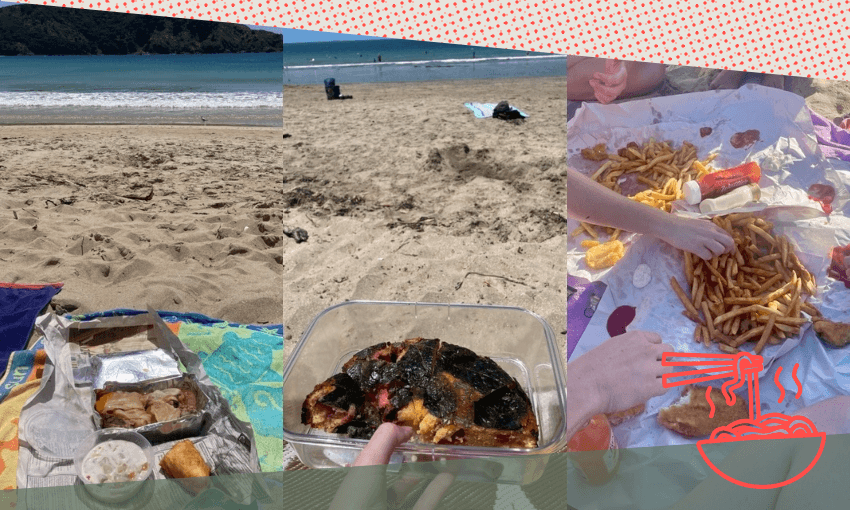Is there anything better than eating food that’s hot and salty when you’re hot and salty yourself?
This is an excerpt from our weekly food newsletter, The Boil Up.
Kai, all on its own, is one of the best things, but isn’t it even better to eat it outside on a midsummer evening? In a garden or at a park, when it’s still light but the sun has lost all harshness and a soft breeze brings with it the scent of fresh dried laundry and tomato leaves. Or in the still-dark kitchen of the early morning, stealing spoonfuls of slightly melted leftover trifle straight from the fridge, the custard somehow sweeter than if you transferred it to a bowl.
I think the very best thing is when food and place combine to become another kind of experience. It is for this reason restaurateurs covet heritage buildings or open venues in the middle of beautiful nowhere, why they will spend thousands on custom lighting, hardwood furniture and fresh flowers. They understand that where we eat is almost as important as what we’re eating. Whenever I’m asked if I’ve eaten anything good lately, flavours always mingle with context.
A Fruju has never tasted so good as the one you slurped down in the back of the car, aircon broken and still an hour from the campground. Halftime at the rugby, optimistically joining the snaking line of sports fans, being rewarded with a hot, greasy bag of doughnuts drowning in cinnamon-scented sugar. A handful of scroggin and a swig of Raro to keep you going until the sweet cup of tea and squashed luncheon sandwich you get at the top of the maunga.
Possibly the best kai + context combination of all is the one that’s in season right now. Salt air, hot sand, the sound of waves crashing. A bundle wrapped in butcher’s paper under your arm, someone else is carrying the fizzy and a tin of tomato sauce. Everyone cheers when you arrive at the right cluster of towels, sandy fingers unwrapping the parcel, searching the sea of beige for their piece of tarakihi, potato fritter, battered oyster. There are no cups for the fizzy so you take turns swigging from the bottle. It’s good because it’s so easy, there’s always a shop nearby and everyone knows what’ll be on offer, but it’s the best because of something more elemental, eating hot and salty food when you’re hot and salty, eating fish with your skin still damp from swimming in their element.
But I don’t just mean fish and chips at the beach. I mean anything eaten at the beach. Last week I had just baked a plum torte in fig leaves (inspired by Natasha Pickowicz) when my group chat lit up: beach? I packed the still-warm torte in Tupperware and headed to the ocean. My first beach day of the summer was impromptu, occurring only because my friends and I happened upon a local iwi fundraiser selling fresh ika, fry bread and hāngī still warm from the pit. We forfeited our hike and took our feast to the beach where the Northland sun gleamed down on our oily aluminium containers.
These examples of beach kai might be unconventional, but they are nothing compared to the impressive set-ups I have observed this summer. A whole fish cooking over a coal barbecue on the sand. A rice cooker simply unplugged and taken to the beach, sitting on a folding table next to so many containers filled with all manner of cooked meat and banchan.
While I love to see folks give new meaning to BYO, seeing the beaches so packed this summer has reminded me of the ones I visited in Europe. On OE in Barcelona, my sister and I showed up with nothing but our towels and were able to buy ice blocks out of a chilly bin from a man walking up and down the sand. Other vendors offered fresh fruit and cold drinks with people willing to pay a premium for the towel-side service. When we were ready for something more substantial, we wandered over to a kiosk for fried calamari. Wouldn’t it be glorious if we could import this culture to Aotearoa? As much as I love packing a Tupperware of leftover pizza in my beach bag, wouldn’t it also be great to rock up to the beach empty-handed and leave salty-haired and satiated?



